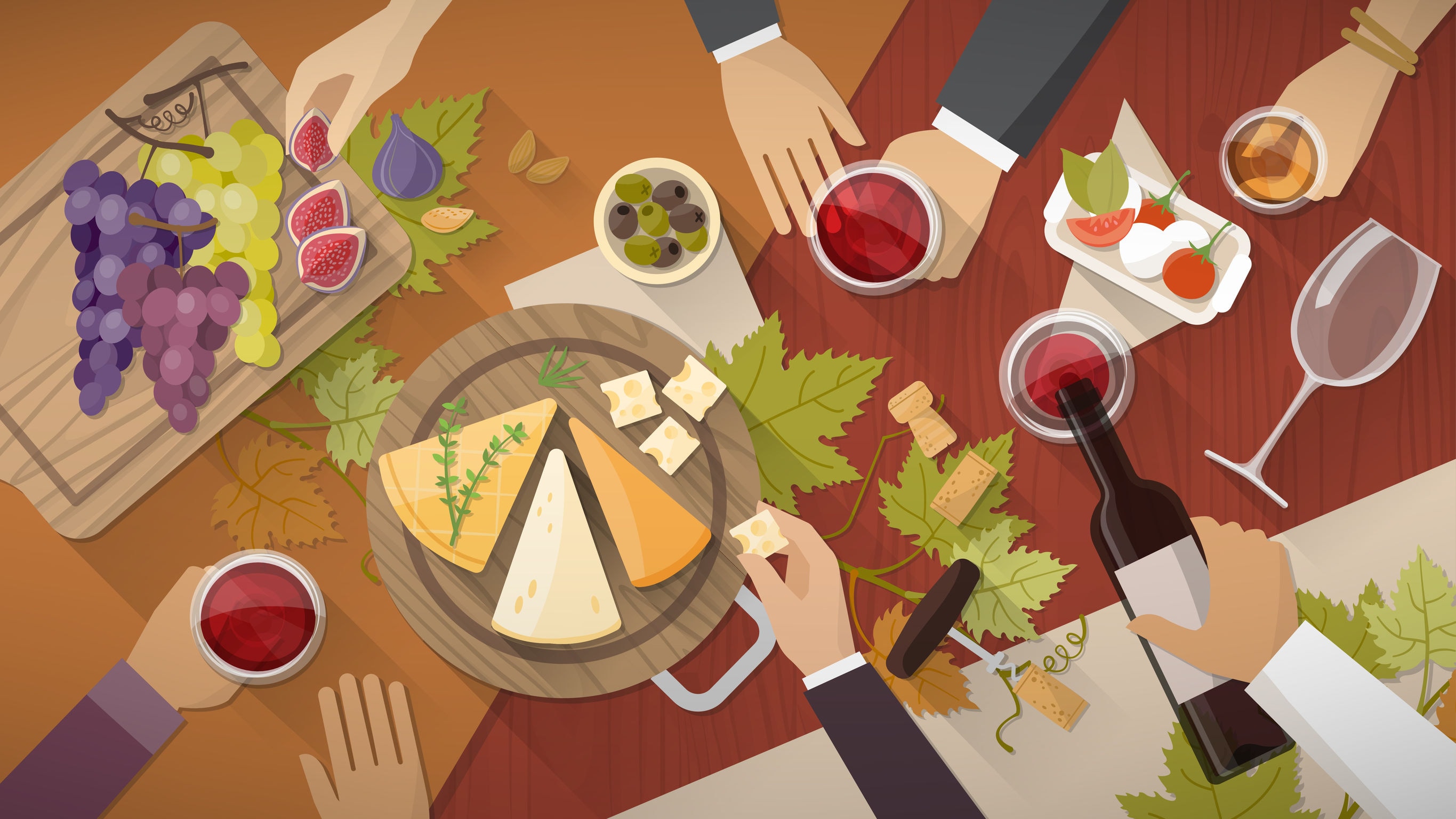A still wine was the coveted end goal of their already famous winemaking, but not much of the process surrounding alcoholic fermentation was understood at the time.
An immense pressure would build in the bottles every spring, resulting in as much as 20-90 percent of the bottles exploding any given year. Anyone entering the cellars to work on the wines (or to fetch a bottle for consumption) had to wear a heavy iron mask or risk injury. Of course, they thought it was the Devil’s work.
Dom Perignon, the monk with a scientific mind, was the key to turning this around. He was indeed an exceptional winemaker who laid the foundation for much of today’s quality winemaking in Champagne. But his goal was never (as is often said) to create the bubbles - it was to avoid them!
Sleeping through winter
Fermentation is the process of making wine out of grapes but also the process of creating the delightful effervescence that was loathed in the time of Dom Perignon.
Tiny yeast cells start eating the fructose in the grape must almost the second the grapes are harvested. In return, they spit out alcohol and carbonic acid. In a still wine, you would let the carbonation from fermentation disappear into the atmosphere, but in champagne and other quality sparkling wines of course you want to catch this bubbly gas. At that time, they did not.
The wine was bottled in the fall when it had seemingly completed fermentation, but a spontaneous second fermentation often started in the spring. The yeasts had become dormant as temperatures dropped but as there was still sugar left in the wine, the microbes had a feast waiting for them when they woke up when the heat returned, creating pressured vessels akin to grenades.
Controlling fermentation
Nowadays we control the process (and have sturdier glass bottles). In a standard 0.75 litre bottle of champagne there is a whooping five litres of compressed carbonic acid, forming bubbles that rise to the surface as soon as the cork is popped. The process to do so is the same for all top-quality sparkling wine.
First, the grape must is fermented (completely, one might add) into a still, very acidic, wine. The wine is bottled and a new dose of yeast is added together with sugar for the yeast to feast on.
Then the bottle is capped (generally with old-school metallic beer bottle caps) and the fermentation re-starts. Since the bottle is now sealed, the carbonation produced when the yeast converts sugar into alcohol stays in the bottle. The dead yeast cells (the lees) are removed, a small dose of sugar is added to all but the driest of champagnes, and a champagne cork with a wire cage is added.
By now, the pressure in the bottle is the same as in a truck tire! Flying champagne corks is still the number one reason for eye injuries in France. It always makes me nervous if someone has loosened the wire cage of a champagne bottle without placing a thumb over the cork - the power is literally explosive.
Autolysis - the pleasure of dead yeast
A key consideration in champagne production, apart from creating the bubbles, is how long the wine is allowed to rest on those lees. This resting period (legally at least 12 months for non-vintage champagne and 36 months for vintage champagne) is about more than letting the wine mature.
It is also very much a question of giving the dead cells time to break into their constituent parts, a so-called “autolysis”. The amino acids from the cell walls is what gives fine champagne its creamy mouth feel and flavor. Who would have thought that disintegrated dead fungi could be so delicious?
Magic for a weekday or celebration
The result of all this work, regardless of style, is the magic in millions of delightful bubbles that lift the wine’s aromas to your nose and palate. Researchers have managed to calculate that every glass contains approximately 20 million bubbles. 20 million! Per glass!
That’s deserving of a toast. Not only at New Year’s Eve or Valentine’s Day but, perhaps even better, on a boring, stressful Tuesday. That is the type of day that needs and deserves a flute full of magic - whether we need to give thanks for that magic to the Devil or that pious monk.
Charles Heidsieck Brut Réserve - rich, full bodied and nougatine, this delicious champagne is even more exciting than the life of its namesake. Haven’t heard of the free-spirited traveling champagne salesman who made a name for himself in America? Google him, the story Champagne Charlie makes quite a read. But the champagne, with 40% reserve wines, needs no storytelling to knock your socks off. Ca 60 USD.
Taittinger Prelude Grands Crus - considered a more affordable “mini Comtes” by those who love the family owned Champagne House’s prestige bottle Comtes de Champagne, this is a beautiful champagne in its own right. Only Grand Cru grapes, and with five years in the cellar, it has a beautiful balance between freshness and nutty richness. Ca 75 USD.
Pierre Peters “Cuvée de Reserve” Brut Blanc de Blancs - refreshment and purity with a surprisingly full, fruity and lemony palate characterizes this perfect aperitif champagne from grower winemaker Rodolphe Peters. It’s elegant, light and “mineral” when young and ages well in your cellar, releasing new levels of complexity and nutty aromas while retaining a firm backbone. Ca 55 USD.




